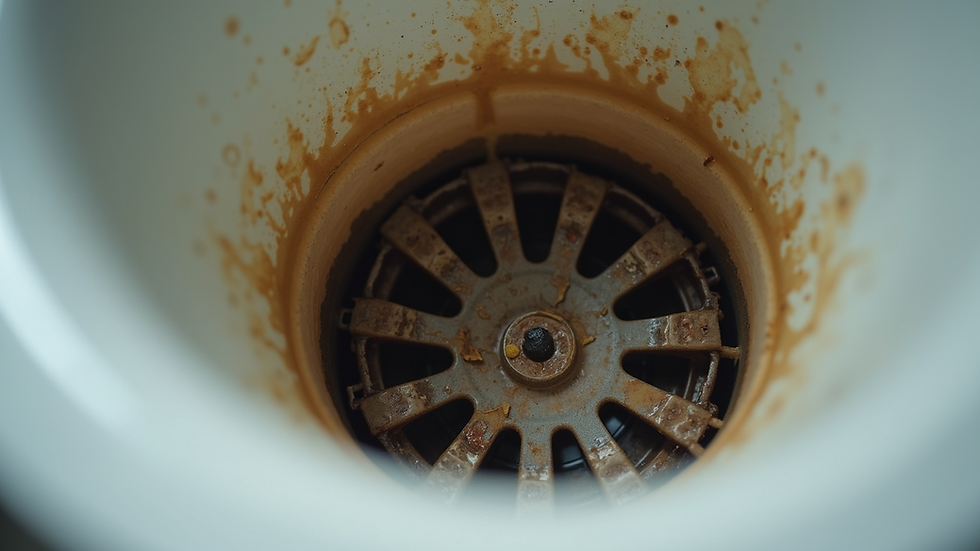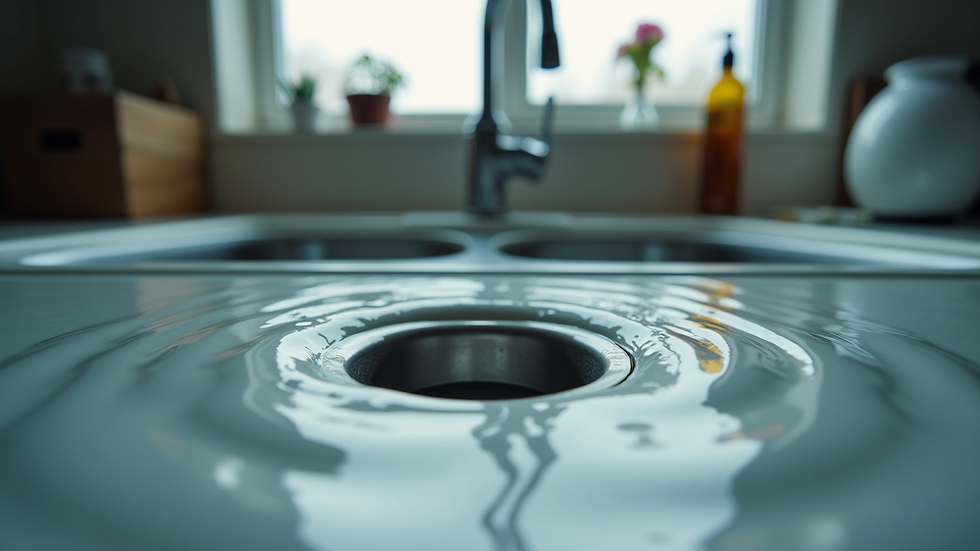Signs You Might Notice Before Your Drain Clogs
- kyle cashion
- Aug 5
- 3 min read
Taking care of your home's plumbing is essential. No one wants to face the stress and expense that comes with drain clogs. Luckily, certain signs can warn you about potential drainage issues before they escalate. Being aware of these early indicators allows you to act quickly and possibly save yourself from bigger problems down the road.
Slow Drainage: Drain clogs
One of the earliest signs that your drain could be clogging is slow water drainage. You may notice this in sinks, showers, or bathtubs. For example, if your kitchen sink typically drains within a couple of minutes but now takes five to ten minutes, that’s a warning sign. It often means that something is beginning to block the pipes.
Unpleasant Odors
Foul smells coming from your drains are another warning sign. While some drainage systems might have a light odor, a strong or unpleasant smell can indicate trapped food waste or hair in the pipes. A study shows that a buildup of organic material can increase bacteria by 50% in just a week, leading to even worse odors. Addressing this promptly can prevent a small issue from becoming a big health risk.

Gurgling Noises
Have you heard gurgling sounds when you run the water? This sound indicates that air is being trapped in your drainage system. It often results from a partial clog that prevents water from flowing smoothly. Initially faint, these sounds may increase in volume. If you notice this, investigate sooner rather than later.
Frequent Backup
Frequent backups can be alarming. For instance, if you flush the toilet and water rises in the bathtub, this points to a plumbing issue. Approximately 30% of homes experience backups due to shared drains, meaning a blockage may be forming somewhere in the connected pipes. Stay alert for this sign to avoid worsening issues.
Water Pooling
If you see water pooling around your drains or under your sink, it’s a clear sign that something is wrong. This condition may result from an inability for wastewater to flow through due to clogs. In fact, untreated pooling can lead to severe plumbing issues, costing homeowners an average of $200 to $600 for repairs.

Increased Insect Activity
Watch for more insects around your drains. Pests like fruit flies and cockroaches are attracted to food particles trapped in drains. If you notice an uptick in insect activity, this could be an indicator of organic buildup, signaling a potential clog that needs immediate attention.
Regular Maintenance Unnoticed
If you’ve established a routine for drain cleaning but notice a sudden decline in performance, don’t ignore it. For example, if you previously cleaned your drains once every six months and now find yourself doing it monthly, there might be a deeper blockage forming. Staying on top of regular maintenance can help you catch these issues early.
Changes in Water Temperature
Sudden changes in water temperature can signal problems. For instance, if hot water takes longer to heat or comes out cold when it should be warm, this might indicate a blockage. Make sure to check if there is a consistent change; it can affect daily household activities significantly.
Strange Water Coloration
Discolored water emerging from your drains can hint at serious problems. If your taps produce rust-colored or murky water, it may indicate corrosion or mineral buildup inside the pipes. This situation can worsen over time, and untreated discoloration may lead to a significant clog. Don't hesitate to seek help from a professional if you notice these changes.
Poor Water Pressure
Have you noticed a sudden drop in water pressure from your faucets or showerheads? This issue often occurs when blockages form. In fact, 25% of homeowners report experiencing water pressure problems due to clogs. If you encounter this issue, investigating the cause should be a priority.
Final Thoughts
Recognizing the signs of impending drain clogs can drastically reduce the likelihood of frustrating plumbing issues. Slow drainage, bad odors, gurgling sounds, and sudden changes in water pressure are key indicators. By being proactive and addressing these signs swiftly, you can keep your drainage system effective and avoid costly repairs down the line. Stay vigilant and ensure a seamless flow in your home!




Comments